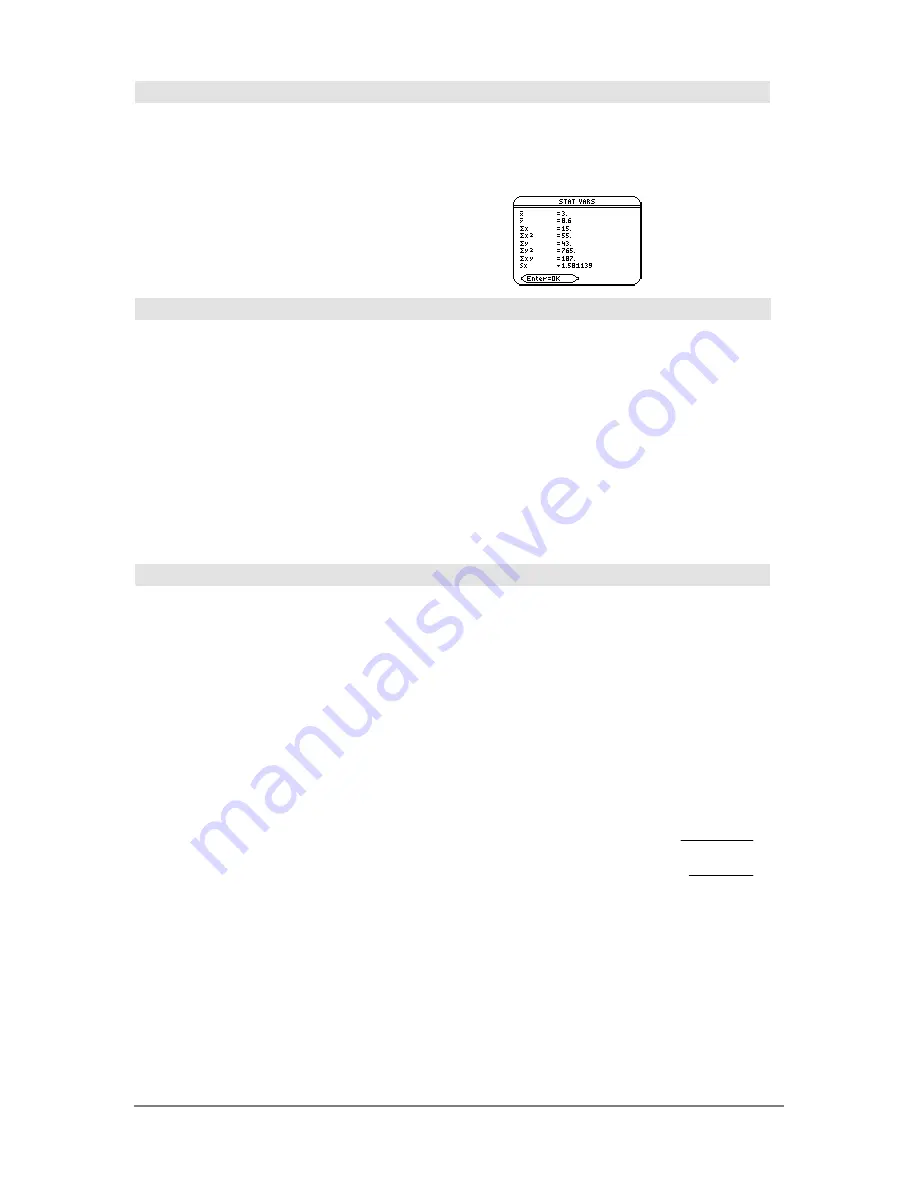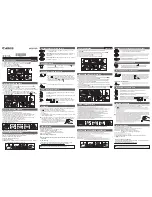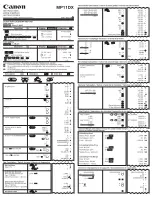
848
Appendix A: Functions and Instructions
ShowStat
CATALOG
ShowStat
Displays a dialog box containing the last computed
statistics results if they are still valid. Statistics
results are cleared automatically if the data to
compute them has changed.
Use this instruction after a statistics calculation,
such as
LinReg
.
{1,2,3,4,5}
!
L1
¸
{1 2 3 4 5}
{0,2,6,10,25}
!
L2
¸
{0 2 6 10 25}
TwoVar L1,L2
¸
ShowStat
¸
sign()
MATH/Number menu
sign(
expression1
)
⇒
expression
sign(
list1
)
⇒
list
sign(
matrix1
)
⇒
matrix
For real and complex
expression1
, returns
expression1
/
abs(
expression1
)
when
expression1
ƒ
0.
Returns 1 if
expression1
is positive.
Returns
ë
1 if
expression1
is negative.
sign(
0
)
returns
„
1 if the complex format mode is
REAL
; otherwise, it returns itself.
sign(
0
)
represents the unit circle in the complex
domain.
For a list or matrix, returns the signs of all the
elements.
sign(
ë
3.2)
¸
ë
1.
sign({2,3,4,
ë
5})
¸
{1 1 1
ë
1}
sign(1+abs(x))
¸
1
If complex format mode is
REAL
:
sign([
ë
3,0,3])
¸
[
ë
1
„
1 1]
simult()
MATH/Matrix menu
simult(
coeffMatrix
,
constVector[
,
tol]
)
⇒
matrix
Returns a column vector that contains the solutions
to a system of linear equations.
coeffMatrix
must be a square matrix that contains the
coefficients of the equations.
constVector
must have the same number of rows
(same dimension) as
coeffMatrix
and contain the
constants.
Optionally, any matrix element is treated as zero if
its absolute value is less than
tol
. This tolerance is
used only if the matrix has floating-point entries and
does not contain any symbolic variables that have
not been assigned a value. Otherwise,
tol
is ignored.
•
If you use
¥ ¸
or set the mode to
Exact/Approx=APPROXIMATE
, computations
are done using floating-point arithmetic.
•
If
tol
is omitted or not used, the default tolerance
is calculated as:
5
E
ë
14
ù
max(dim(
coeffMatrix
))
ù
rowNorm(
coeffMatrix
)
Solve for x and y:
x + 2y = 1
3x + 4y =
ë
1
simult([1,2;3,4],[1;
ë
1])
¸
[
ë
3
2
]
The solution is x=
ë
3 and y=2.
Solve:
ax + by = 1
cx + dy = 2
[a,b;c,d]
!
matx1
¸
[
a b
c d
]
simult(matx1,[1;2])
¸
ë
(2
ø
b
ì
d)
a
ø
d
ì
b
ø
c
2
ø
a
ì
c
a
ø
d
ì
b
ø
c
Содержание Titanium TI-89
Страница 9: ...Getting Started 6 TI 89 Titanium keys Ë Ì Í Ê ...
Страница 34: ...Getting Started 31 2 or D 2 B u s i n e s s D B D B Press Result ...
Страница 43: ...Getting Started 40 3 0 D B D D B D Press Result ...
Страница 44: ...Getting Started 41 D 2 0 0 2 D B Scroll down to October and press Press Result ...
Страница 58: ...Getting Started 55 Example Set split screen mode to TOP BOTTOM Press Result 3 B D ...
Страница 70: ...Getting Started 67 ...
Страница 175: ...Operating the Calculator 172 From the Keyboard ...
Страница 456: ...Tables 453 ...
Страница 503: ...Split Screens 500 Note Both Top Bottom and Left Right splits use the same methods to select an application ...
Страница 527: ...Data Matrix Editor 524 ...
Страница 704: ...Connectivity 701 A TI 89 Titanium and a Voyage 200 linked together I O Port I O Port I O unit to unit cable ...
















































